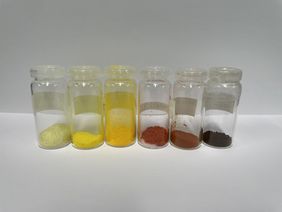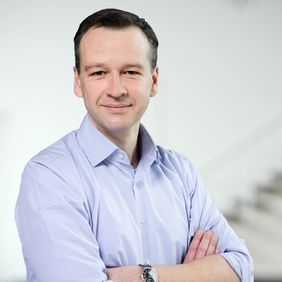Prof. Dr. Arne Thomas, head of the Functional Materials department at TU Berlin and speaker of the UniSysCat Cluster of Excellence was nominated for the “Falling Walls Science Breakthrough of the Year 2023” by the Berlin Falling Walls Foundation. The winners will be announced on September 13, 2023 and will be able to present their research at the Falling Walls Science Summit in Berlin on November 9, 2023.
Arne Thomas is one of only ten nominees in the “Physical Sciences” category. In total, more than 1,000 researchers from all over the world applied for the six Breakthrough of the Year categories. Thomas works in the field of organic photocatalysts, which use sunlight to enable important chemical reactions, such as the production of hydrogen from water or the conversion of CO2 into basic chemicals for industry. They could therefore become an important instrument for a change towards decentralized and environmentally friendly energy production.
“I am very pleased about the nomination because it will make the advantages and opportunities of photocatalysis known to an even larger audience,” explains Arne Thomas. Photocatalysts absorb the energy of sunlight and create charge carriers that can then be transferred to substrates for chemical reactions, enabling reactions that would otherwise not occur. “Many photocatalysts currently consist of rare and expensive chemical elements,” says Thomas. He therefore made it his mission to develop organic photocatalysts, which largely consist of the ubiquitous elements carbon, hydrogen, and nitrogen.
"You can hold the surface of a football field in one hand."
“We can now combine different functional molecules to form large network structures so that the resulting materials have precisely defined properties for the respective application. They can absorb a large part of the sunlight and thus absorb a lot of energy. In addition, these materials have very large surface areas, often more than a thousand square meters per gram of material. So you can hold the surface of a football field in one hand.” Because a solid catalyst only interacts with the starting materials via its surface atoms and thus influences their reaction, these large surfaces are extremely important in order to convert the largest possible quantities of substances per time.
What many people don't know: Photocatalysis is an alternative process to electrolysis, i.e., the splitting of water into oxygen and hydrogen using electricity, to produce hydrogen. “I don’t see photocatalysis as a competitor, but rather as a complement to electrolysis,” explains Arne Thomas. “The big advantage is of course the simplicity of the process. Especially with inexpensive organic photocatalysts, hydrogen could be produced decentrally, i.e. in many places.” The efficiencies of photocatalysis are now similar to those of the coupling of photovoltaics and electrolysis.
Nature is the model
The possibility of simple, decentralized production would also be a major advantage in producing industrial chemicals from water and carbon dioxide derived from the air or from combustion processes. “The model here is nature, which does exactly that with photosynthesis in the leaves,” says Thomas. While a tree produces carbohydrates in this way, photocatalysis could be used to produce the basic chemicals for fuels, dyes, medicines, detergents, or plastics, for example. “Our vision for the future is that cities, communities and perhaps even individual households will be able to generate storable energy in the form of hydrogen or fuels and important products for everyday life in a decentralized manner and with the help of sunlight. This would lead to independence from critical raw materials and would also significantly shorten transport routes,” explains Arne Thomas. This vision is also an important part of the research program of the UniSysCat Cluster of Excellence.
Author: Wolfgang Richter
Additional information:
Interview by the Falling Walls Foundation with Prof. Dr. Arne Thomas
Portrait of Prof. Dr. Arne Thomas on the Falling Walls Website




